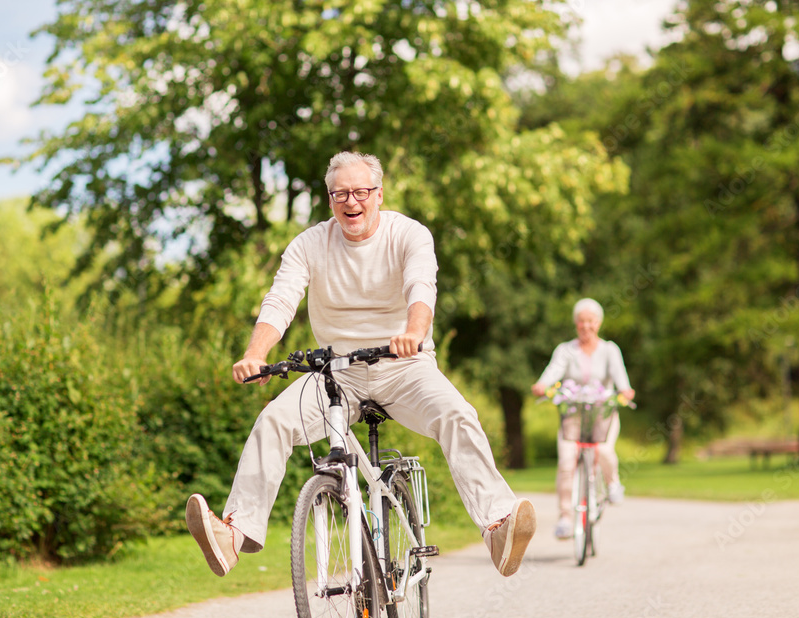
Living with hip or knee osteoarthritis (OA) can be challenging as these conditions can lead to pain, stiffness, and decreased mobility. The important role a podiatrist can play in the holistic management of hip or knee OA is often overlooked. As a podiatrist, every day I see the benefits our advice and treatments provide patients suffering from OA. In this blog, we describe what OA is and how best a podiatrist can help.
What is osteoarthritis?
Osteoarthritis is a condition characterised by changes to the joint’s cartilage which, over time, can limit the range of motion in the joint. This reduced range of motion may lead to pain, inflammation and stiffness. These symptoms are often exacerbated when in the presence of excessive load from body weight, bone alignment and foot posture. Historically, osteoarthritis was known as “wear and tear” arthritis. It was thought that if you damaged your hip or knee joint in an accident, you were bound to get arthritis in that joint. We now know it’s much more complex than that. Appropriate movement and loading of joints are healthy for the bone and cartilage – movement and load stimulate the lubrication of the joint whilst helping to repair and rebuild any previous damage. It can be argued that lack of use may allow the cartilage to become dryer, more brittle and more prone to damage over time.
I am concerned I have hip/knee arthritis – do I need a scan?
In most cases, you do not need an x-ray or scan if you are concerned you have OA. Osteoarthritis can be diagnosed based on your clinical signs and symptoms. Sometimes people have already had scans when they come to see us and are concerned about their x-ray report that says they have OA or degenerative arthritis. The truth is that there is a poor correlation of evidence between a person’s symptoms and what is in the imaging report. As clinicians, we focus on you and what you are telling us and our examination findings, not the words written on an imaging report.
What are some treatment options for OA?
In a nutshell, the two cornerstones to improving quality of life while living with OA are exercise and weight loss. Pain management with medication is important, but often overused. Taking medication singularly, without addressing exercise and weight loss, has led to poor patient outcomes.
It is important to remember, when getting advice from health practitioners, to question if their advice is evidence-based and individualised to your specific needs. A baseline assessment needs to be completed so you can work with your health practitioners to set goals. You need to consider the type of exercise, the amount of exercise and your likelihood of adhering to a program (so choose exercise you like and have fun!). During this process, seek guidance from your health practitioners to modify the exercise if problems arise. Lastly, make sure you are informed and empower yourself by seeking education about OA and the ways you can make changes to positively influence your life.
When should I see a podiatrist?
If you are experiencing knee and hip OA symptoms, it may be beneficial to consult a podiatrist. As you can imagine, it is difficult to exercise if your feet are painful or part of the problem. The podiatrist can perform a comprehensive evaluation to assess your specific condition and determine the most suitable treatments for you whilst taking into account your medical history, lifestyle, and foot mechanics. Treatments may include custom foot orthotics, footwear advice, stretching and strengthening programs. The main goal is to keep you active. Hip and knee OA can be challenging conditions to manage, but podiatry treatments can play a valuable role in alleviating pain, improving function, and enhancing mobility.
Five key points
- Podiatry can help you in your journey with OA – book in for a comprehensive assessment of your feet and gait.
- Choose the type of exercise you like and do it frequently!
- Don’t believe everything on your x-ray report – x-ray reports can have a poor correlation with your function and pain.
- Weight loss, particular for hip and knee OA, is important to help with reducing pain.
- Education – learn as much as you can about OA to help you make informed decisions on your treatment.
French, S. D., et al. (2015). What do people with knee or hip osteoarthritis need to know? An international consensus list of essential statements for osteoarthritis. Arthritis Care & Research, 67(6), 809-816.
Kolasinski, S. L., et al. (2020). 2019 American College of Rheumatology/Arthritis Foundation guideline for the management of osteoarthritis of the hand, hip, and knee. Arthritis & Rheumatology, 72(2), 220-233.
Holden, M. A., et al. (2023). Moderators of the effect of therapeutic exercise for knee and hip osteoarthritis: a systematic review and individual participant data meta-analysis. The Lancet Rheumatology.


